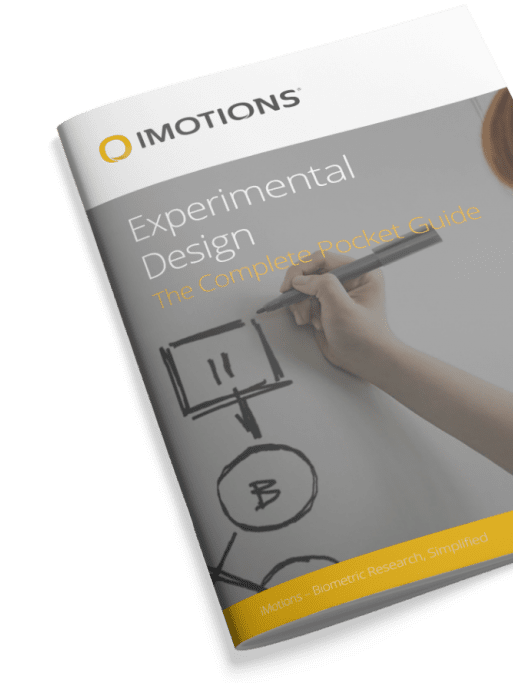Research design plays a crucial role in conducting scientific studies and gaining meaningful insights. A well-designed research enhances the validity and reliability of the findings and allows for the replication of studies by other researchers. This comprehensive guide will provide an in-depth understanding of research design, its key components, different types, and its role in scientific inquiry. Furthermore, it will discuss the necessary steps in developing a research design and highlight some of the challenges that researchers commonly face.
Table of Contents
Understanding Research Design
Research design refers to the overall plan or strategy that outlines how a study is conducted. It serves as a blueprint for researchers, guiding them in their investigation, and helps ensure that the study objectives are met. Understanding research design is essential for researchers to effectively gather and analyze data to answer research questions.
When embarking on a research study, researchers must carefully consider the design they will use. The design determines the structure of the study, including the research questions, data collection methods, and analysis techniques. It provides clarity on how the study will be conducted and helps researchers determine the best approach to achieve their research objectives. A well-designed study increases the chances of obtaining valid and reliable results.
Definition and Purpose of Research Design
Research design is the framework that outlines the structure of a study, including the research questions, data collection methods, and analysis techniques. It provides a systematic approach to conducting research and ensures that all aspects of the study are carefully planned and executed.
The purpose of research design is to provide a clear roadmap for researchers to follow. It helps them define the research questions they want to answer and identify the variables they will study. By clearly defining the purpose of the study, researchers can ensure that their research design aligns with their objectives.
Key Components of Research Design
A research design consists of several key components that influence the study’s validity and reliability. These components include the research questions, variables and operational definitions, sampling techniques, data collection methods, and statistical analysis procedures.
The research questions are the foundation of any study. They guide the entire research process and help researchers focus their efforts. By formulating clear and concise research questions, researchers can ensure that their study addresses the specific issues they want to investigate.

Variables and operational definitions are also crucial components of research design. Variables are the concepts or phenomena that researchers want to measure or study. Operational definitions provide a clear and specific description of how these variables will be measured or observed. By clearly defining variables and their operational definitions, researchers can ensure that their study is consistent and replicable.
Sampling techniques play a vital role in research design as well. Researchers must carefully select the participants or samples they will study to ensure that their findings are generalizable to the larger population. Different sampling techniques, such as random sampling or purposive sampling, can be used depending on the research objectives and constraints.
Data collection methods are another important component of research design. Researchers must decide how they will collect data, whether through surveys, interviews, observations, or experiments. The choice of data collection method depends on the research questions and the type of data needed to answer them.
Finally, statistical analysis procedures are used to analyze the collected data and draw meaningful conclusions. Researchers must determine the appropriate statistical tests or techniques to use based on the nature of their data and research questions. The choice of statistical analysis procedures ensures that the data is analyzed accurately and that the results are valid and reliable.
Types of Research Design
Research design encompasses various types that researchers can choose depending on their research goals and the nature of the phenomenon being studied. Understanding the different types of research design is essential for researchers to select the most appropriate approach for their study.
When embarking on a research project, researchers must carefully consider the design they will employ. The design chosen will shape the entire study, from the data collection process to the analysis and interpretation of results. Let’s explore some of the most common types of research design in more detail.
Experimental Design
Experimental design involves manipulating one or more variables to observe their effect on the dependent variable. This type of design allows researchers to establish cause-and-effect relationships between variables by controlling for extraneous factors. Experimental design often relies on random assignment and control groups to minimize biases.
Imagine a group of researchers interested in studying the effects of a new teaching method on student performance. They could randomly assign students to two groups: one group would receive instruction using the new teaching method, while the other group would receive instruction using the traditional method. By comparing the performance of the two groups, the researchers can determine whether the new teaching method has a significant impact on student learning.
Experimental design provides a strong foundation for making causal claims, as it allows researchers to control for confounding variables and isolate the effects of the independent variable. However, it may not always be feasible or ethical to manipulate variables, leading researchers to explore alternative designs.
Free 44-page Experimental Design Guide
For Beginners and Intermediates
- Introduction to experimental methods
- Respondent management with groups and populations
- How to set up stimulus selection and arrangement

Non-Experimental Design
Non-experimental design is used when it is not feasible or ethical to manipulate variables. This design relies on naturally occurring variations in data and focuses on observing and describing relationships between variables. Non-experimental design can be useful for exploratory research or when studying phenomena that cannot be controlled, such as human behavior.
For instance, researchers interested in studying the relationship between socioeconomic status and health outcomes may collect data from a large sample of individuals and analyze the existing differences. By examining the data, they can determine whether there is a correlation between socioeconomic status and health, without manipulating any variables.
Non-experimental design allows researchers to study real-world phenomena in their natural setting, providing valuable insights into complex social, psychological, and economic processes. However, it is important to note that non-experimental designs cannot establish causality, as there may be other variables at play that influence the observed relationships.
Quasi-Experimental Design
Quasi-experimental design resembles experimental design but lacks the element of random assignment. In situations where random assignment is not possible or practical, researchers can utilize quasi-experimental designs to gather data and make inferences. However, caution must be exercised when drawing causal conclusions from quasi-experimental studies.
Consider a scenario where researchers are interested in studying the effects of a new drug on patient recovery time. They cannot randomly assign patients to receive the drug or a placebo due to ethical considerations. Instead, they can compare the recovery times of patients who voluntarily choose to take the drug with those who do not. While this design allows for data collection and analysis, it is important to acknowledge that other factors, such as patient motivation or severity of illness, may influence the observed outcomes.
Quasi-experimental designs are valuable when experimental designs are not feasible or ethical. They provide an opportunity to explore relationships and gather data in real-world contexts. However, researchers must be cautious when interpreting the results, as causal claims may be limited due to the lack of random assignment.
By understanding the different types of research design, researchers can make informed decisions about the most appropriate approach for their study. Each design offers unique advantages and limitations, and the choice depends on the research question, available resources, and ethical considerations. Regardless of the design chosen, rigorous methodology and careful data analysis are crucial for producing reliable and valid research findings.
The Role of Research Design in Scientific Inquiry
A well-designed research study enhances the validity and reliability of the findings. Research design plays a crucial role in ensuring the scientific rigor of a study and facilitates the replication of studies by other researchers. Understanding the role of research design in scientific inquiry is vital for researchers to conduct impactful and robust research.
Ensuring Validity and Reliability
Research design plays a critical role in ensuring the validity and reliability of the study’s findings. Validity refers to the degree to which the study measures what it intends to measure, while reliability pertains to the consistency and stability of the results. Through careful consideration of the research design, researchers can minimize potential biases and increase the accuracy of their measurements.
Facilitating Replication of Studies
A robust research design allows for the replication of studies by other researchers. Replication plays a vital role in the scientific process as it helps confirm the validity and generalizability of research findings. By clearly documenting the research design, researchers enable others to reproduce the study and validate the results, thereby contributing to the cumulative knowledge in a field.
Steps in Developing a Research Design
Developing a research design involves a systematic process that includes several important steps. Researchers need to carefully consider each step to ensure that their study is well-designed and capable of addressing their research questions effectively.
Identifying Research Questions
The first step in developing a research design is to identify and define the research questions or hypotheses. Researchers need to clearly articulate what they aim to investigate and what specific information they want to gather. Clear research questions provide guidance for the subsequent steps in the research design process.
Selecting Appropriate Design Type
Once the research questions are identified, researchers need to select the most appropriate type of research design. The choice of design depends on various factors, including the research goals, the nature of the research questions, and the available resources. Careful consideration of these factors is crucial to ensure that the chosen design aligns with the study objectives.
Determining Data Collection Methods
After selecting the research design, researchers need to determine the most suitable data collection methods. Depending on the research questions and the type of data required, researchers can utilize a range of methods, such as surveys, interviews, observations, or experiments. The chosen methods should align with the research objectives and allow for the collection of high-quality data.
One of the most important considerations when designing a study in human behavior research is participant recruitment. We have written a comprehensive guide on best practices and pitfalls to be aware of when recruiting participants, which can be read here.
Enhancing Research Design with iMotions and Biosensors
Introduction to Enhanced Research Design
In the realm of scientific studies, especially within human cognitive-behavioral research, the deployment of advanced technologies such as iMotions software and biosensors has revolutionized research design. This chapter delves into how these technologies can be integrated into various research designs, improving the depth, accuracy, and reliability of scientific inquiries.
Integrating iMotions in Research Design
iMotions Software: A Key to Multimodal Data Integration
The iMotions platform stands as a pivotal tool in modern research design. It’s designed to integrate data from a plethora of biosensors, providing a comprehensive analysis of human behavior. This software facilitates the synchronizing of physiological, cognitive, and emotional responses with external stimuli, thus enriching the understanding of human behavior in various contexts.
Biosensors: Gateways to Deeper Insights
Biosensors, including eye trackers, EEG, GSR, ECG, and facial expression analysis tools, provide nuanced insights into the subconscious and conscious aspects of human behavior. These tools help researchers in capturing data that is often unattainable through traditional data collection methods like surveys and interviews.
Application in Different Research Designs
Experimental Design
- Eye Tracking: In experimental designs, where the impact of visual stimuli is crucial, eye trackers can reveal how subjects interact with these stimuli, thereby offering insights into cognitive processes and attention.
- EEG: EEG biosensors allow researchers to monitor brain activity in response to controlled experimental manipulations, offering a window into cognitive and emotional responses.

Non-Experimental Design
- Facial Expression Analysis: In observational studies, analyzing facial expressions can provide objective data on emotional responses in natural settings, complementing subjective self-reports.
- GSR/EDA: These tools measure physiological arousal in real-life scenarios, giving researchers insights into emotional states without the need for intrusive measures.
Quasi-Experimental Design
- EMG: In studies where direct manipulation isn’t feasible, EMG can indicate subtle responses to stimuli, which might be overlooked in traditional observational methods.
- ECG/PPG: These sensors can be used to understand the impact of various interventions on physiological states such as stress or relaxation.
Streamlining Research Design with iMotions
The iMotions platform offers a streamlined process for integrating various biosensors into a research design. Researchers can easily design experiments, collect multimodal data, and analyze results in a unified interface. This reduces the complexity often associated with handling multiple streams of data and ensures a cohesive and comprehensive research approach.
Integrating iMotions software and biosensors into research design opens new horizons for scientific inquiry. This technology enhances the depth and breadth of data collection, paving the way for more nuanced and comprehensive findings.
Whether in experimental, non-experimental, or quasi-experimental designs, iMotions and biosensors offer invaluable tools for researchers aiming to uncover the intricate layers of human behavior and cognitive processes. The future of research design is undeniably intertwined with the advancements in these technologies, leading to more robust, reliable, and insightful scientific discoveries.
Challenges in Research Design
Research design can present several challenges that researchers need to overcome to conduct reliable and valid studies. Being aware of these challenges is essential for researchers to address them effectively and ensure the integrity of their research.
Ethical Considerations
Research design must adhere to ethical guidelines and principles to protect the rights and well-being of participants. Researchers need to obtain informed consent, ensure participant confidentiality, and minimize potential harm or discomfort. Ethical considerations should be carefully integrated into the research design to promote ethical research practices.
Practical Limitations
Researchers often face practical limitations that may impact the design and execution of their studies. Limited resources, time constraints, access to participants or data, and logistical challenges can pose obstacles during the research process. Researchers need to navigate these limitations and make thoughtful choices to ensure the feasibility and quality of their research.
Research design is a vital aspect of conducting scientific studies. It provides a structured framework for researchers to answer their research questions and obtain reliable and valid results. By understanding the different types of research design and following the necessary steps in developing a research design, researchers can enhance the rigor and impact of their studies.
However, researchers must also be mindful of the challenges they may encounter, such as ethical considerations and practical limitations, and take appropriate measures to address them. Ultimately, a well-designed research study contributes to the advancement of knowledge and promotes evidence-based decision-making in various fields.











